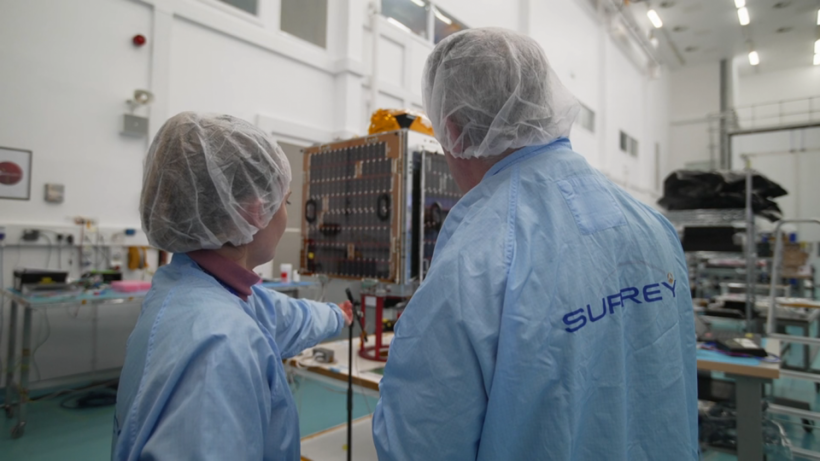
©techtimes
Vocabulary:
I will read the words, meanings, and sample sentences. Then, repeat after me.
- possess /puh-ZES/
- consumption /kuhn-SUHMP-shuhn/
- inefficient /in-i-FISH-uhnt /
- initiative /ih-NISH-uh-tiv/
- comprehensive /kom-pri-HEN-siv/
[verb] – to have or own something, or to have a particular quality
David possesses a strong work ethic, always completing his tasks with dedication.
[noun] – the amount used or eaten
Excessive consumption of fatty foods has negative effects on one’s health.
[adjective] – wasting time, money, energy, or other valuable possessions or qualities
Using an inefficient workflow can result in wasted time and effort.
[noun] – a new plan or process to achieve something or solve a problem
James took the initiative to organize a neighborhood cleanup event.
[adjective] – complete and including everything that is necessary
She prepared a comprehensive list of ingredients needed for the recipe.
Article reading:
Please read the whole article. Then, I will check your pronunciation and intonation.
HotSat-1, aptly named for its mission, was successfully launched on a SpaceX Falcon-9 rocket from Vandenberg Space Force Base in California. This compact satellite, equipped with an advanced infrared sensor, has been developed with funding from the UK and European space agencies. Operating at an altitude of 500km, it possesses the remarkable capability to observe individual rooftops and walls, providing invaluable insights into building energy consumption. The United Kingdom faces significant challenges in terms of energy-efficient housing, with a large portion of its dwellings built before 1970. HotSat-1, developed by Satellite Vu, is a novel satellite designed to tackle this issue. It aims to identify areas that require retrofitting, which can help reduce fuel costs for homeowners and contribute to the country’s goal of achieving climate neutrality by 2050. Satellite Vu, led by CEO Anthony Baker, recognizes the importance of utilizing city-wide data to efficiently locate the most energy-inefficient buildings, track the effectiveness of upgrades, and guide strategic insulation initiatives.
Satellite Vu plans to establish a constellation of satellites, functioning as “thermometers in the sky.” This network will provide comprehensive coverage and enable diverse applications of thermal data. In addition to assessing building heat profiles, HotSat-1 can identify structures and open spaces that contribute to the urban heat island effect, such as large retail center parking lots. The gathered data will aid urban planners in determining optimal locations for tree planting to mitigate rising temperatures. Furthermore, industries like finance, insurance, and even the military can leverage temperature changes captured over time to gain valuable intelligence and insights.
Satellite Vu plans to establish a constellation of satellites, functioning as “thermometers in the sky.” This network will provide comprehensive coverage and enable diverse applications of thermal data. In addition to assessing building heat profiles, HotSat-1 can identify structures and open spaces that contribute to the urban heat island effect, such as large retail center parking lots. The gathered data will aid urban planners in determining optimal locations for tree planting to mitigate rising temperatures. Furthermore, industries like finance, insurance, and even the military can leverage temperature changes captured over time to gain valuable intelligence and insights.
Discussion Questions:
I will read each question. Then, please answer them.
- Have you personally experienced the impact of excessive heat in your city? If yes, how did it affect you and those around you? If not, how do you think excessive heat could potentially impact individuals and communities in your city?
- Have you heard of or been involved in any efforts to mitigate or reduce the heat in your city? If yes, could you share what those efforts were? If not, would you be interested in learning more about initiatives or actions taken in your city to address the issue of urban heat?
- Do you think using city-wide data to guide insulation initiatives is effective?
- What are your thoughts on using satellite technology to monitor and analyze building energy consumption?
- Can you think of any other innovative uses for satellite data, such as building energy consumption or urban planning, that could benefit society or specific industries?
Summarization
Please summarize the whole article using your own words and expressions. You will have one minute to prepare before you answer.
Describe:
Please explain the definition of each word listed below based on your understanding. You can provide example sentences if needed.
- insight
- invaluable
- energy inefficient
- climate neutrality
- urban heat island
Listening: